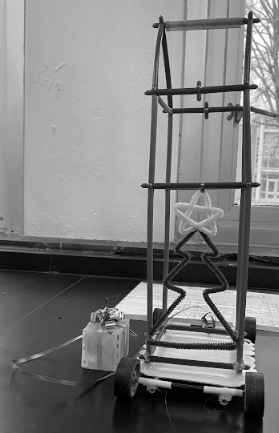Scientific developments that shaped 2021
January 18, 2022
*The COVID vaccine experienced rapid developments during this year, becoming available for any citizen over the age of 4. By the end of the year, roughly 61% of the US population has received both of their doses. However, there is still a long way to go. Only 8% of people in low-income countries have received just their first dose. With these gaps in numbers, the virus will continue to mutate, infect, and kill individuals.(SMITHSONIAN)
*NASA made major developments last year, specifically when the rover Perseverance landed on Mars back in February. The rover was equipped with a helicopter that was able to fly around the planet’s atmosphere, collecting samples of rocks and other specimens that will allow further insight to Mars’ environment. (SMITHSONIAN)
*“Perhaps most significantly, in July the rover made history when it drilled and collected a rock core from a Martian boulder. This marked the first time that humanity had ever collected such a sample from another world.” It is currently stored in the rover awaiting a “collect-and-return” mission. The rover will continue to roam Mars in search of more geological samples and perhaps signs that life once existed on the planet. (NEWSWEEK)
*Space themed advancements have occurred in other countries as well. The United Arab Emirates space probe, “Hope”, entered Martian orbit and is studying it’s atmosphere and weather. Also, China’s Zhurong rover landed on the planet and is in search of water, studying the geology. These developments are made so humans may one day be able to explore Mars in person, rather than via rover. (SMITHSONIAN)
*Though COVID is the prominent disease threat to the world, Malaria is still prominent in many societies. Last year, The World Health Organization greenlighted the first malaria vaccine for children, who die more often from the disease than any other age group. In fact, it takes the lives of 23,000 children each year. This disease has been spreading throughout lower income centuries for decades, so to have a vaccine for it is extremely significant. (SMITHSONIAN)
*Human-Monkey Chimeric embryo sparks controversy, after monkey embryos were injected with human stem cells. The longest living embryos survived 19 days after fertilization. “This breakthrough reinforces an increasingly inescapable fact: biological categories are not fixed: they are fluid. This poses significant ethical and legal challenges.” This could lead to new opportunities, though it’s ethics are in question. “This research opens Pandora’s box to human-nonhuman chimeras. The key ethical question is: what is the moral status of these novel creatures?” (NEWSWEEK)






